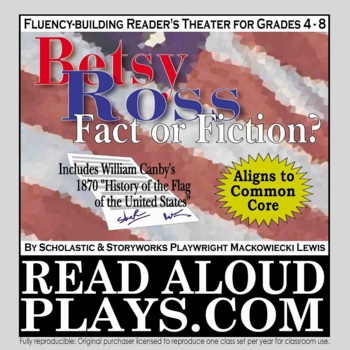Betsy Ross: Fact or Fiction? U.S. History Reader's Theater
- PDF
- Easel Activity
Description
The history of the flag of the United States is a compelling story, but historians are divided as to the facts. Did Betsy Ross really create the first flag? This play, which was originally published in my book, Read Aloud Plays: Symbols of America, and later reprinted in the January 2002 issue of Scholastic's Storyworks magazine, encourages readers to become history sleuths. It includes the play script, a short reading supplement, a bubble quiz, a comprehension activity built around William Canby's 1870 treatise on the matter. Suitable for reader's theater or full stage production, use it with students in grades 4 through 7 (and potentially 3 - 8) to build fluency and to satisfy a variety of Common Core standards in Literature and Informational Text.
This play is suddenly important, not because of Betsy Ross, but because we're going through an era in which there seems to be a lot of misinformation about flag etiquette and the flag's true meaning. Happy directing!






